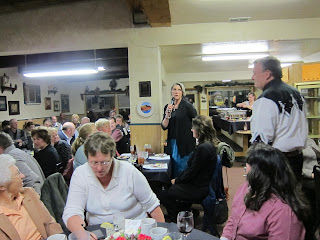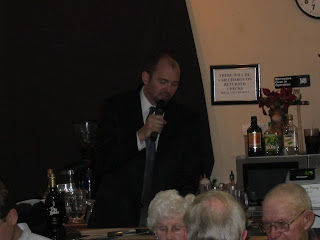DEAR
NETWORKING PARTICIPANT:
Once
again it’s time for the FALL
semiannual NETWORKING SESSION
- the time to meet people countywide from chambers of commerce, towns,
government entities, and organizations that sponsor and hold events and
activities. These sessions are scheduled
twice a year, spring and fall, to promote communication in our rapidly changing
county through the knowledge of people involved. People meet together to announce plans for
the upcoming season and connect names with faces. People exchange addresses and phone numbers,
and suddenly everyone knows who to call to get things done. Hopefully, people now talk to each
other.
This
interaction has been so helpful to the development of the county that the Kremmling Area Chamber of Commerce and the
Middle Park Medical Center – Kremmling Memorial Hospital District, the
Grand County Board of Commissioners, and I are joining together to make this
happen once again. You are invited to
the FALL 2011 NETWORKING LUNCHEON TO BE HELD THURSDAY, NOVEMBER 3RD, FROM
12 NOON TO 2:30 PM at the CSU EXTENSION HALL on the Grand County
Fairgrounds in Kremmling. A
simple lunch will be served starting at 11:30 AM.
Remember, in addition, we have a NETWORKING SERVICES FAIR of local
valley businesses (printers, computer consultants, DJ services, etc) who want to
provide services to your activity or group.
This is being done nowhere else and we hope it will continue to interest
you. We will have a maximum of six
booths and these booths will be available from 11 am throughout the session
until breakdown at 3:30 pm. Please plan
to visit these booths to talk individually with providers. REMEMBER, these booths are designed for those
who need more space or more time to talk with other coordinators attending the
luncheon.
BE
PREPARED WITH SCHEDULES AND HANDOUTS for the upcoming season for about 60 people
and bring your business cards.
IMPORTANT: Each person has only three minutes to speak, and our
hosts will make a presentation during the program. Allow lots of time to talk with people afterwards, at least a half an
hour. If you are no longer the contact
for your organization, please advise who should be on our mailing list. We suggest limiting your representatives to a
maximum of two per organization. Feel
free to add to our mailing list. If your
organization would like to sponsor an upcoming networking session, please ask
for details.
Please RSVP for the luncheon by THURSDAY, OCTOBER 27, 20011
TO:
Diana Lynn Rau (Home and business)
Mercury International dba The Travel
Society
PO
Box 757, Fraser, CO
80442
970-887-3095-Business 887-3086-fax e-mail: dianalrau@cs.com





















